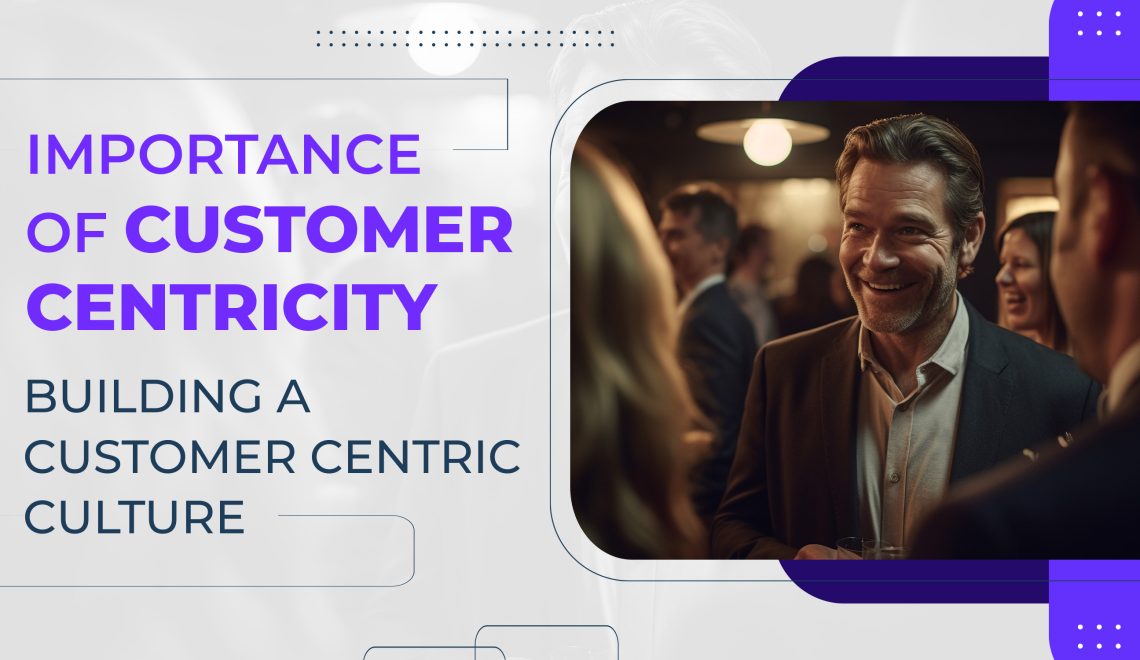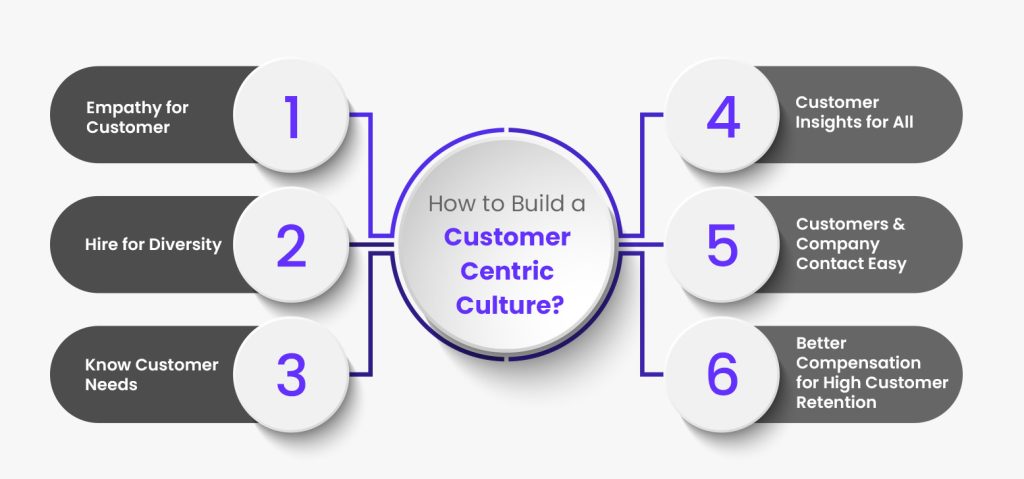
Every management dreams of forming a fully customer-centric organisation. However, only 14% of marketers believe that their company is truly customer-focused.
At SBL, customer centric culture is deep-rooted in our cultural philosophy. Delivering outstanding customer experiences is our top-most priority which drives major decisions and business operations. Speaking from experience, creating and sustaining a customer-centric way of working requires intentional strategies from the management. In this blog, we discuss 6 strategies to build a personalised and customer-first organisation!
How to Build a Customer Centric Culture?
Today, customers hold the power. Over the years, their expectations have evolved – they don’t just want a quality product or service, they crave an exceptional end-to-end experience.
Don’t worry! The strategies to become a customer-centric organisation are no rocket science. Here are the top 6 strategies to support a customer-centric culture (that every manager should incorporate in their workplace) :

Empathy for Customer
Too often, organisations fail to truly listen and address the “why” behind customer behaviors.
In customer experience, empathy is the keyword. Customer empathy specifically involves identifying the emotional needs of consumers, the reasons behind those needs, and giving empathetic solutions wherever possible.
Most customers have a hard time feeling heard by the companies because these companies fail to understand the needs and desires of the customers. As a manager, it is your responsibility to build strong and empathetic customer support in order to better understand how the customers need help.
Hire for Diversity
Organisations have a diverse customer base. Basically, we are working for people of color, age, gender, and socio-economic status.
Thus, it is equally important to build teams with diverse perspectives, backgrounds, and experiences. More diverse teams reflect the diverse needs and wants of the world we live in. These employees don’t just work to solve problems but also care how their solutions are beneficial to customer experiences. With different points of view, customer issues are solved at the first step itself.
Know Customer Needs
Another key strategy to build a customer centric culture is going beyond just listening to current customer needs and wants. While that can be the starting point, authentic brands always go beyond the usual.
The best customer-centric company doesn’t just respond to current demands – they anticipate future, unmet needs of customers. We need to think outside the box to proactively solve problems customers may not even realise they have yet.
A lot of inventions wouldn’t be done if people only focussed on what was needed and wanted. This future-focused mindset has always delivered helpful solutions and will continue to pave the way for innovation.
Customer Insights for All
Customer research and insights are readily available to the sales and marketing team. But when it comes to employees working in the finance and HR departments, they may not even know such data exists. Without insights, how will they even step into customer’s shoes? That’s impossible!
As a manager, it’s your responsibility to ensure different departments have access to customer insights be it ratings, reviews, or support calls. Grant employees access to relevant customer information in order to facilitate customer understanding. When people are acquainted with customers’ problems and understand where they are coming from, it is easy for them to ensure a good customer experience at the roots.
Customers and Company Contact Easy
Customer interactions boost credibility and make it easy for employees to understand the pain points of customers. This is one of the best ways to encourage employees to bring fresh ideas to the table since they understand the context now.
Employees who are willing to go the extra mile for customers should also be involved in the decision-making process. Their feedback on existing solutions will come from an unbiased perspective, thereby, improving the processes.
Better Compensation for High Customer Retention
Incentivising employees with a compensation program upon customer satisfaction is an important element of a customer-centric culture. When compensation and rewards are directly linked to customer experience and retention, employees are highly motivated to reinforce customer-first work culture. Basically, this aligns the whole team and ensures that everyone is working towards the same goal.
Remember to set up an incentive plan that rewards your employees based on customer satisfaction levels (and retention insights).
How to Know You’ve Made It?
An organisation’s most valuable asset will always be its customers. It is important to know how a company is known to its customers. Every interaction, from awareness to purchase and support, shapes their perception of the brand.
To ensure a customer centric culture and that employees are on the right track, start by defining performance indicators like Net Promoter Score (NPS) and Customer Satisfaction (CSAT). If you want me to explain these indicators in detail, drop a comment below and I’ll be happy to write a blog on performance indicators.
Follow me on LinkedIn
Frequently Asked Questions
1. What is customer centricity?
Customer centricity is a cultural mindset where the customer is at the heart of every business decision, process, and initiative across the departments. It’s when we go beyond just providing good customer service – we genuinely put in the effort to understand customer needs, empathise with their needs and strive hard to deliver exceptional end-to-end experiences.
2. Why is building a customer-centric culture important for businesses?
Building a customer-centric culture is crucial because companies that prioritise customer experiences achieve higher customer satisfaction, retention, revenue, and overall business performance. It also helps managers identify engaged employees who are ready to go the extra mile and deliver exceptional services to the customers.
3. How can you sustain a customer-first culture long-term?
Managers can sustain a customer-first culture by reinforcing the importance of customer centricity through their actions and decisions. They also need to ensure that processes are evolved to adapt to changing customer needs. It can never be treated as a completed initiative – it’s an ongoing process driven by the customer’s voice and employees’ dedication to deliver the best.



